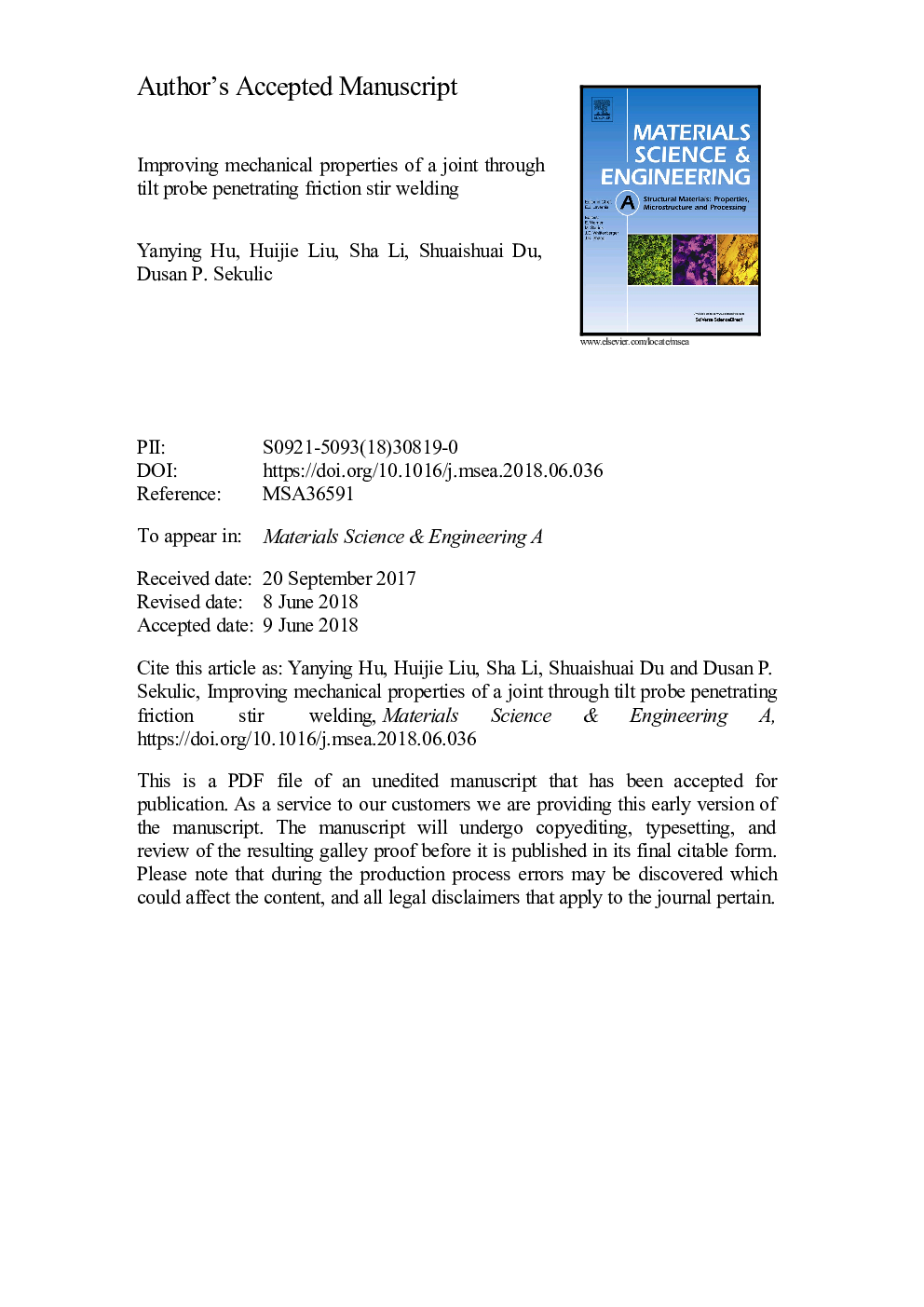| Article ID | Journal | Published Year | Pages | File Type |
|---|---|---|---|---|
| 7971682 | Materials Science and Engineering: A | 2018 | 29 Pages |
Abstract
The essential reason for the formation of a kissing bond in a friction stir welded joint is an inadequate stirring action of the tool against the material in the root of the weld. This leads to the appearance of the residual faying interface. In this study, the workpieces were completely penetrated by a tilting tool. This was accomplished with the proposed tilt probe Penetrating Friction Stir Welding (PFSW). The kissing bond in the root was successfully eliminated and a sound joint was achieved. Microstructure and mechanical properties of the PFSW joint were compared to the Conventional Friction Stir Welded (CFSW) one. An adequate stirring of the probe contributes to a formation of fine equiaxed grains in the root of PFSW weld, thus leading to a better microstructure uniformity. Compared to the CFSW, the proposed PFSW improves mechanical properties of the joint. Both the grain refinement and dislocations strengthening contribute to the increased micro-hardness in the weld nugget zone of the PFSW joint.
Related Topics
Physical Sciences and Engineering
Materials Science
Materials Science (General)
Authors
Yanying Hu, Huijie Liu, Sha Li, Shuaishuai Du, Dusan P. Sekulic,
